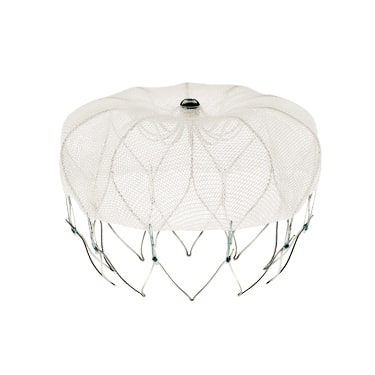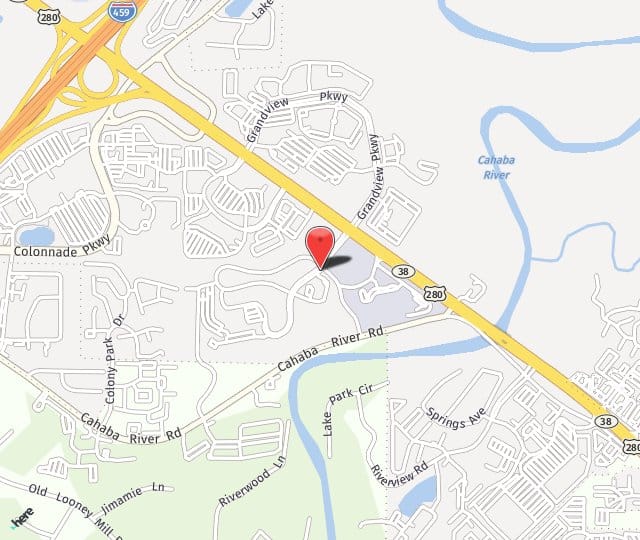What is WATCHMAN?
The WATCHMAN is a one-time implantation procedure that reduces the risk of stroked originating in the left atrial appendage (LAA). The implant occludes the left atrial appendage, which is the source of blood clots from atrial fibrillation. This implant eliminates the need for blood thinners for those at a high risk of stroke from AFib.
The WATCHMAN procedure is FDA approved and proven to safely and effectively reduce stroke risk in patients.
Candidates for WATCHMAN Implant
Candidates for the WATCHMAN procedure are those that are at a higher risk of stroke but have trouble with anticoagulation. Appropriate candidates have one or more of the following:
- A history of major bleeding when taking therapeutic anticoagulation therapy
- Inability to maintain a stable therapeutic International Normalized Ratio (INR) and unavailability of an approved alternative anticoagulation agent.
- A medical condition, occupation, or lifestyle that puts the patient at high risk of major bleeding due to trauma.

Why don’t all patients with AFib have the WATCHMAN device implanted?
The Watchman device is only approved for people with AFib that is not caused by heart valve problems. Watchman is basically used for patients with non-valvular AFib so that they can not only lower their chance of stroke but also their elevated chance of bleeding due to their necessary long-term use of blood-thinning drugs, such as warfarin.
The Watchman device doesn’t have the same effect in patients with valvular atrial fibrillation caused by a heart valve problem. These problems could be due to a narrow or leaking valve, or a prior valve repair or replacement.
Generally, the Watchman device is a good option for patients who don’t tolerate blood-thinning medications.
Who should not get a WATCHMAN Implant?
The Watchman implant works by creating a barrier that prevents blood clots from the left atrial appendage from entering the bloodstream. The left atrial appendage is where most blood clots are found. Before the Watchman device was developed, patients with AFib often faced the lifelong use of blood thinners to reduce the risk of stroke.
Blood thinners provide an option for many patients with AFib but may not be suitable in every situation due to inherent risks. The Watchman implant may be an appropriate alternative for those who cannot take blood thinners long-term. Studies of this medical device in patients with atrial fibrillation indicate that the safety and efficacy of the implant are comparable to blood thinners in the right circumstance.
What are the benefits of a WATCHMAN Implant?
The Watchman implant works by creating a barrier that prevents blood clots from the left atrial appendage from entering the bloodstream. The left atrial appendage is where most blood clots are found. Before the Watchman device was developed, patients with AFib often faced the lifelong use of blood thinners to reduce the risk of stroke.
Blood thinners provide an option for many patients with AFib but may not be suitable in every situation due to inherent risks. The Watchman implant may be an appropriate alternative for those who cannot take blood thinners long-term. Studies of this medical device in patients with atrial fibrillation indicate that the safety and efficacy of the implant are comparable to blood thinners in the right circumstance.
How does the WATCHMAN Implant reduce my risk of stroke?
There is an area within the heart called the left atrial appendage. This is where over 90 percent of blood clots form when a person has atrial fibrillation. If one of these clots escapes the heart and enters the carotid artery, it can create a blockage that leads to a stroke.
When the Watchman device is implanted, this effectively closes off the left atrial appendage, so blood cannot pool in the area and clot. This dramatically reduces the patient’s chances of a stroke.
What are the risks of this procedure?
As with all medical procedures, the Watchman implant carries certain risks. These relate to the insertion of the implant as well as the use of the device. Surgical risks include allergic reaction, anesthesia risks, bruising, infection /pneumonia, hypotension, and other conditions. During the consultation visit for a Watchman implant, the full degree of risks is discussed.
How long does a WATCHMAN device last?
Since the inception of this device, more than 100,000 patients have received a Watchman implant. Since that time, accumulated data has been gathered to evaluate the durability of the device. After insertion, the Watchman implant becomes encased in the body’s natural lining, essentially incorporating the device as a part of the body. This process leads to expectations that the Watchman implant should last a lifetime.
What should I expect at the consultation?
A consultation for AFib and the Watchman implant largely revolves around decision-making. Suitability for this treatment is determined on a case-by-case basis. Each patient’s atrial fibrillation is carefully evaluated and compared against candidacy requirements, such as being a poor fit for blood-thinning medication. The pretreatment consultation involves discussion of the patient’s goals and values, the potential benefits of surgery, and also the risks involved in getting an implanted device. A member of the medical staff may assist with obtaining insurance coverage for the Watchman implant procedure. Additionally, tests may be conducted or ordered to assess heart structure, specifically the left atrial appendage. Tests assist with the proper sizing of the Watchman implant.
What tests are required for the WATCHMAN procedure?
Dr. Smith evaluates every patient on a case-by-case basis to determine if they are suitable for the Watchman implant. Once he has determined a patient could be a candidate, he will perform these tests to be sure the patient can have a Watchman device implanted.
- Ultrasound scan — Also known as a transesophageal echo (TEE), this test uses a long, thin endoscope to guide the ultrasound transducer down the patient’s esophagus. This allows Dr. Smith to see the pictures of the heart without the ribs or lungs getting in the way. The TEE is performed to assess the left atrial appendage and to help select sizing of the Watchman device.
- CT scan — Computer tomography is also often used to allow Dr. Smith to assess the heart to determine the left atrial appendage type and size.
What is the WATCHMAN procedure?

Prior to the procedure, patients should not consume any food or drinks after midnight the night before implantation. Blood thinners are also held before the procedure.
This procedure is performed under general anesthesia using a standard transseptal technique. Dr. Smith performs a transesophageal echocardiagram (TEE) to measure the left atrial appendage to see what size implant needs to be used.
After being prepped, the WATCHMAN device is inserted in an access sheath, and slowly advanced under fluoroscopic guidance. Dr. Smith then deploys the WATCHMAN into the LAA. By closing off the LAA, the risk of stroke is reduced and patients may be able to stop taking (anticoagulants) blood thinners over time.
The average time of the procedure is one hour. Patients typically stay in the hospital for 24 hours.
Patient Testimonials
"Definitely one of the best cardiologist in the country in all categories."
"Excellent bed manners! I had a feeling of confidence that I would feel better and I did! Thanks!"
What to expect after WATCHMAN Implantation
After having the WATCHMAN procedure, patients should sustain to light activity for two days. This recovery is similar to when having an angiogram or left heart catheterization. After just 45 days after implantation, "92% of patients were able to stop taking warfarin. By one year, the number increased to over 99%."
What kind of light activity is acceptable two days after the procedure?

The Watchman implant is inserted via a catheter inserted into the upper leg. As a result, patients may experience mild discomfort in this area in the days and weeks following their procedure.
Patients are advised not to drive for several days after their surgery. Additionally, strenuous activity and exercise must be avoided for 3 days.
Examples include climbing stairs, running, heavy lifting, heavy housework or yard work, riding a bicycle, bending, squatting, and sexual activity.
Before resuming exercise and activities more strenuous than walking, patients should check with their doctor. Until cleared by the doctor, patients should limit physical activity to walking for 5 to 10 minutes. Short walks may occur several times a day.
What medications need to be taken after the WATCHMAN device is implanted?
Dr. Smith uses the Watchman device to help patients overcome the need for blood-thinning medications. Still, after he implants the device, the patient will need to stay on Coumadin/Warfarin for 45 days. This is the time necessary for the body to cover the Watchman device with its own natural lining. Until this happens, there is still a risk that the patient can form blood clots in the left atrial appendage. Once the Watchman is covered with lining, however, the patient may not need blood thinning medication moving forward. Of course, this varies by the patient.
Can I have an MRI or go through a metal detector after having a WATCHMAN implanted?
You can safely go through any airport or other metal detectors. You can have an MRI, as long as the conditions on your implant card are followed. Before you have an MRI, you need to hand this card to the radiologist to ensure the conditions are met.
Schedule a Consultation
If you think you may be a candidate for the WATCHMAN implant, contact Macy C. Smith at 205-971-7566 Dr. Smith serves Birmingham, AL and surrounding areas.

